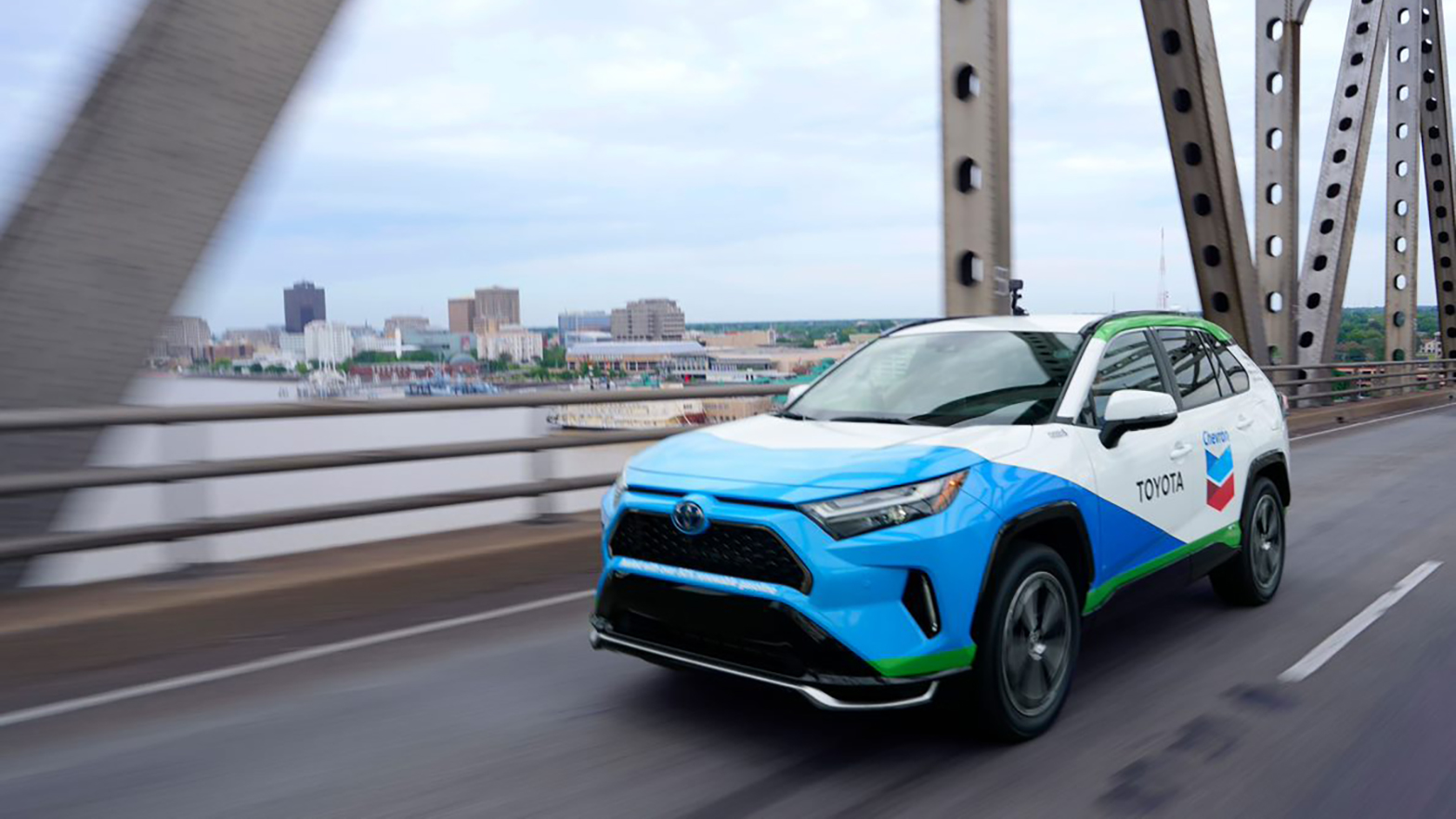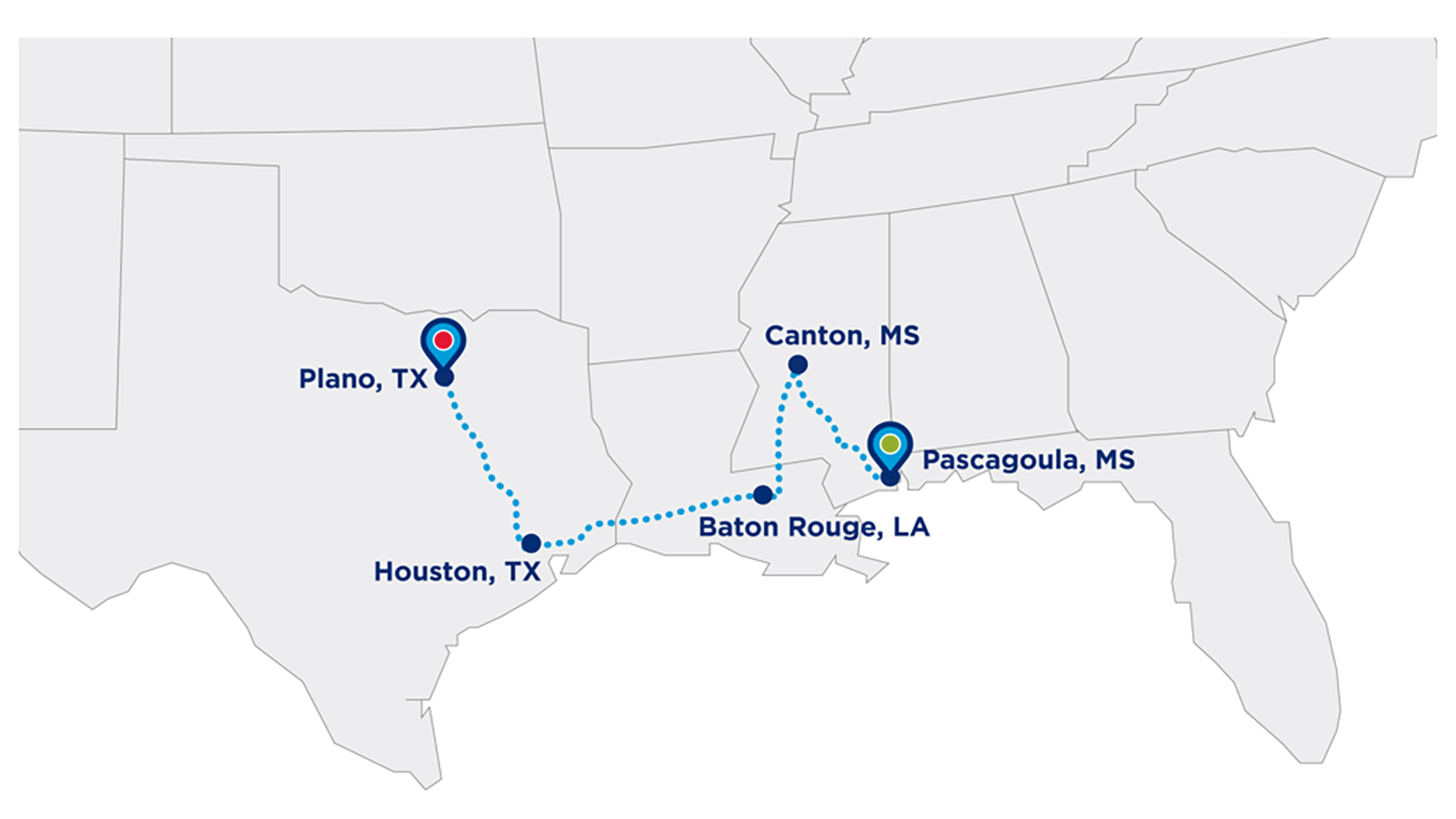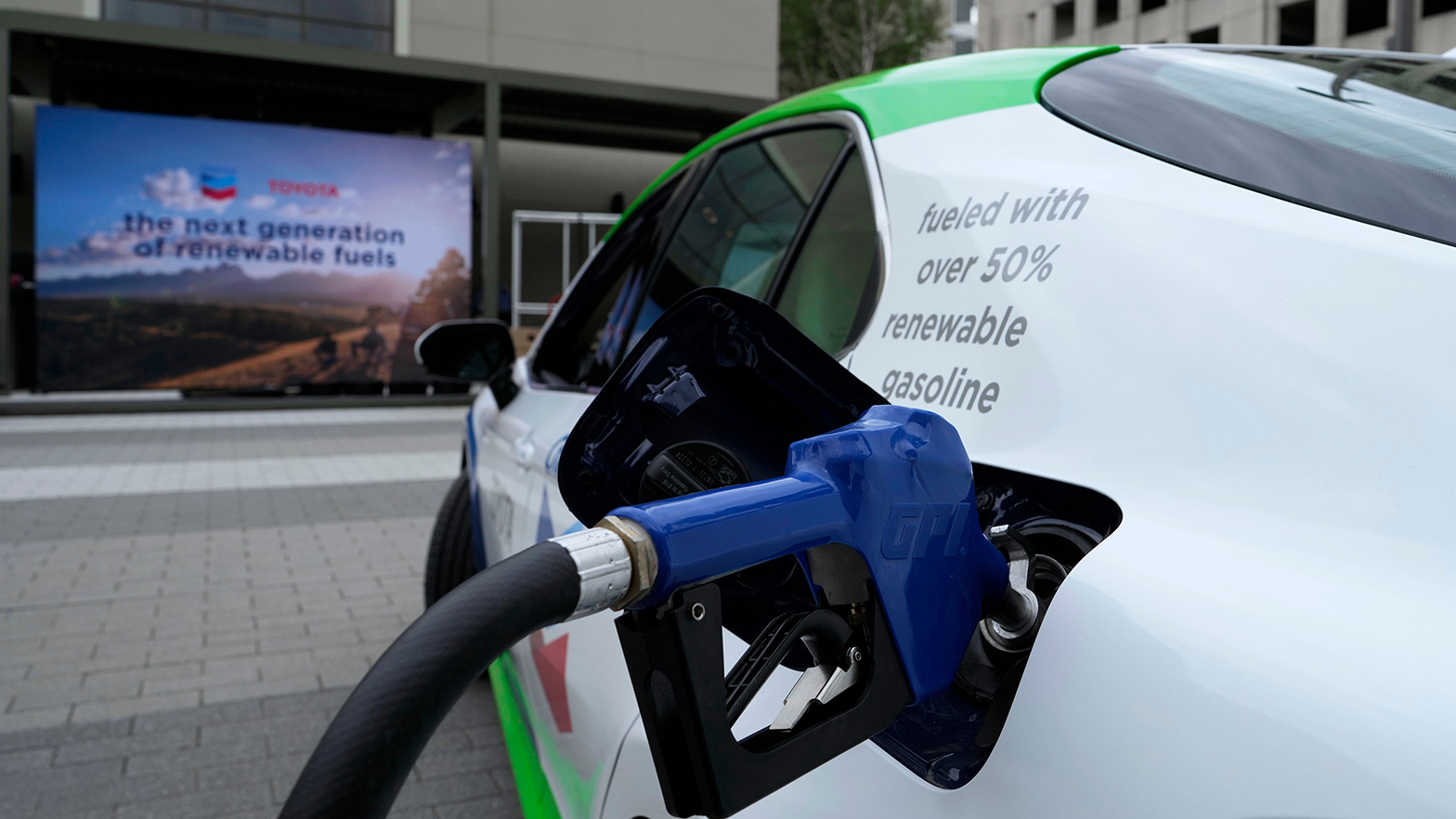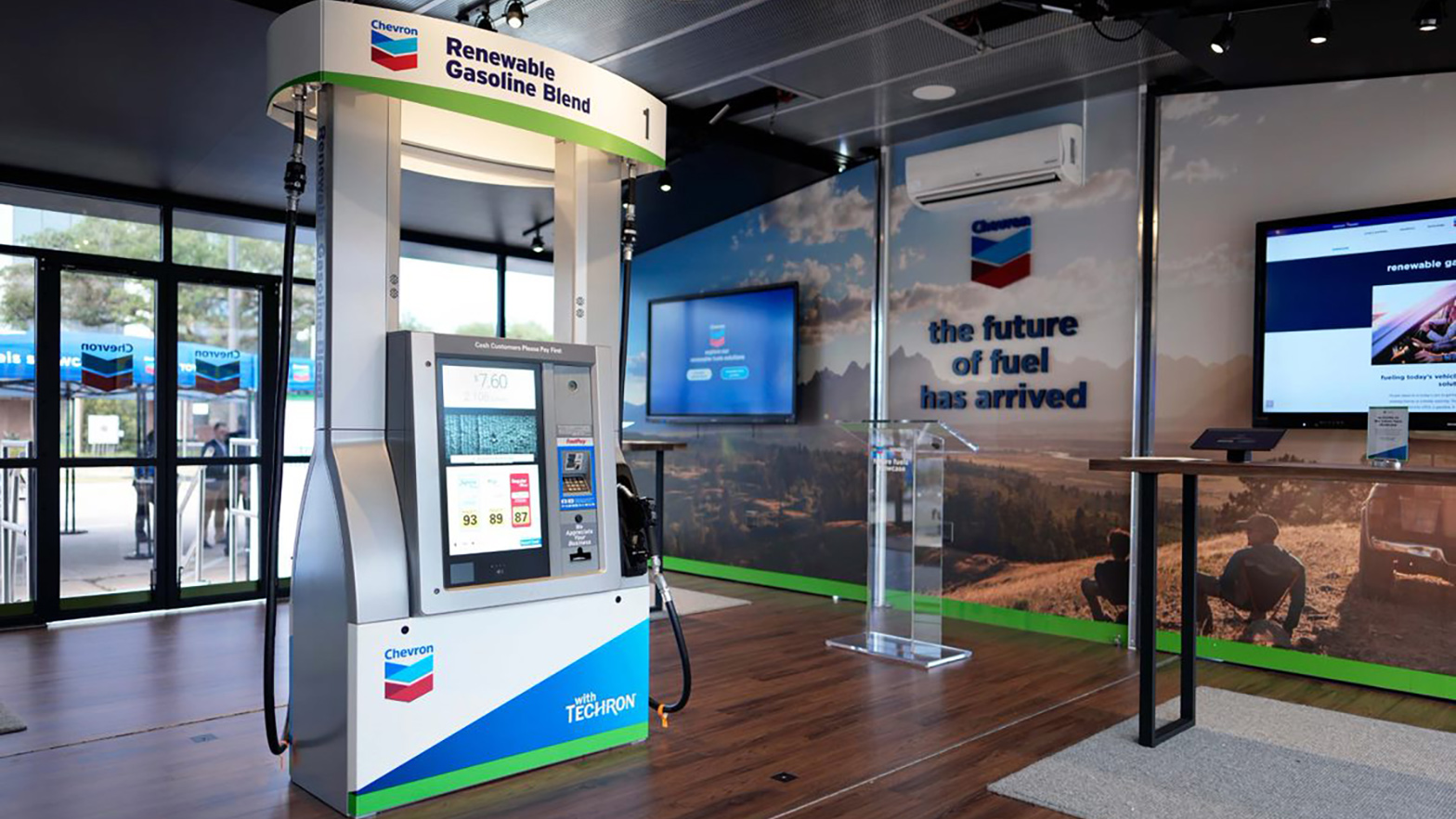alternative fuels
renewable gasoline blend hits the road
3 min read | june 13, 2023
In April, Chevron took a road trip across approximately 1,000 miles of the U.S. Gulf Coast to showcase our innovative fuel prototype that could reduce the lifecycle carbon intensity of vehicles on the road today.
We filled three Toyota vehicles with our renewable gasoline blend and drove from Mississippi to Texas. The Camry, RAV4 and Tundra were all powered by the drop-in fuel prototype, which is composed of more than 50% renewable content.

by the numbers
In the United States:
- Approximately 95% of passenger vehicles use some sort of liquid fuel.
- More than 265 million vehicles in the U.S. are gasoline powered.
- The light-duty transportation sector accounts for 57% of GHG transportation emissions.
- Our renewable gasoline blend can reduce lifecycle CO2 emissions by more than 40% compared to traditional gasoline.
- The average passenger vehicle is 12 years old and remains on the road for almost 20 years, meaning cars sold in the 2030s will still be on the road in the 2050s.
With the help of renewable gasoline blends, we can begin reducing lifecycle emissions from these vehicles.

Chevron’s road trip began in Pascagoula, Mississippi and continued through Canton, Mississippi and Baton Rouge, Louisiana. From there, it passed through Houston, Texas before reaching its destination: Plano, Texas.
5
cities
976
miles per car
40%
lower emissions per vehicle
go deeper
Our road test included a Toyota Camry LE FWD, a RAV4 PRIME and a Tundra—all of which were entirely fueled with our renewable gasoline blends.
Between Pascagoula, Mississippi, and Plano, Texas, lifecycle carbon emissions were reduced by 410 kilograms.
If Chevron’s renewable gasoline blend replaced conventional gasoline for a year in each state we visited during our journey, the result would be:
- A decrease of 7 megatonnes of carbon emissions in Mississippi.
- A decrease of 12.3 megatonnes of carbon emissions in Louisiana.
- A decrease of 66.9 megatonnes of carbon emissions in Texas.
That would be approximately equivalent to eliminating the CO2 emissions produced by each state’s entire home electricity sector for one year.
the big picture
Chevron believes the future is lower carbon. A comprehensive approach including multiple solutions is required to reduce carbon intensity in the passenger transportation sector.
Vehicles powered by electricity, lower carbon intensity liquid fuels, hydrogen and renewable natural gas all play essential parts in this process.
By adopting diverse strategies, we can work together to reduce emissions for all vehicles in the U.S.—now and in the coming years.
Readers can follow this page for updates on renewable gasoline blends.

working with existing infrastructure
People depend on today’s cars to get from one place to another.
The main fuel source for our vehicles, even projected into 2050, is gasoline.
A lower carbon future depends on providing drivers an opportunity to reduce their CO2 footprint with affordable, reliable, and ever-cleaner energy options.
Compatibility with current infrastructure and gasoline-fueled cars allows Chevron’s renewable gasoline blend to enable virtually all drivers to help contribute to a lower carbon future without having to purchase new vehicles or new engines.

what’s next
Chevron is working to enable public policy that supports producing fuels like renewable gasoline blends which could help reduce lifecycle carbon intensityin the transportation sector. Governments are incentivizing the use of lower carbon fuels, and renewable gasoline blends should be part of that conversation.
Renewable gasoline blends could become a scalable, cost-effective alternative to traditional fuels with the help of public programs. Chevron believes that advancing public policies which enable renewable gasoline blend’s production could be one way to help reduce the greenhouse gas emissions of vehicles on the road today.
The road to lower carbon gasoline starts here.
Be sure to follow this page for updates on renewable gasoline blends.
tyler kruzich
chevron corporate affairs manager

what they’re saying
During the tour, Chevron representatives talked with stakeholders about the benefits of lower carbon, renewable fuels that are compatible with internal combustion engines.
“With more than 265 million gasoline-powered vehicles on the road today in the United States, renewable gasoline blend could empower virtually all drivers to have a role in a lower carbon transportation future,” said Andy Walz, Chevron’s president of Americas Products.
Our belief is that the future of transportation is lower carbon, and we’re working to grow our biofuels business to meet the energy needs of today’s world.
andy walz
chevron’s president of americas products
topics covered
related content
-

 chevron CEO discusses the future of energy
chevron CEO discusses the future of energyemissions solutionsjanuary 20, 2025
-

 novel ideas, established companies key to advancing lower carbon tech
novel ideas, established companies key to advancing lower carbon techemissions solutionsjanuary 14, 2025
-

 chevron CEO talks growing production, efficient spending
chevron CEO talks growing production, efficient spendingemissions solutionsdecember 18, 2024
-

 1st US hydrogen-powered passenger ferry open for business
1st US hydrogen-powered passenger ferry open for businessalternative fuelsaugust 23, 2024
chevron email updates
Subscribe to our newsletter to receive news and updates.



